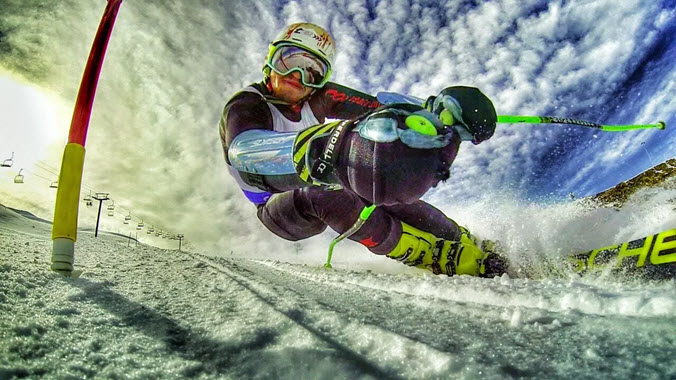
There is no doubt that skiing is a great workout, but the question remains – is skiing enough for a fit and healthy body? The consensus among recreational skiers may be “yes”. However, according to the American Council on Exercise (ACE), skiing is a strenuous sport that requires strength, flexibility, endurance, balance, coordination, and technique. If muscles are not prepared and ready to react to these constantly changing elements, fatigue will set in quickly, causing strength and technique to fade. Skiing when physically fit can be much more enjoyable and rewarding while helping you stay safe on the hill.
The ACE says that a sport-specific training regimen is important for skiing due to the sport’s combination of coordination, agility, balance, speed, and power. A strong core and powerful quads and hamstrings, combined with smaller muscles and ligaments such as the tibialis anterior, tensor fasciae latae (TFL), gluteus medius, gluteus minimus, and the transverse abdominis are necessary for dynamic skiing. Each run requires the ability to complete short sprints, while the combination of runs throughout the day requires stamina. Having both aerobic (endurance) and anaerobic (short sprints) training included in your fitness plan will help take your skiing to the next level.

Example exercises for ski-specific training:
Squat – The squat will help to strengthen the glutes and thighs predominately, but the abs, obliques, hamstrings, back, calves, ankles, and hip flexibility help to support the body during this exercise. A squat is comprised of a few key elements: hips move back and down, the chest remains high and back neutral, knees are behind but in line with the toes, and the hips drop below parallel. Squat jumps, single-leg squats, box squats, and stability ball squats are great variations on the classic squat that add different elements of strengthening and stabilization.

Lunge – Lunges work the glutes, hamstrings, and quads while using the calves, abs, and back as stabilizers. As with the squat, the chest stays high and the knee should remain behind the toe of the front foot. Lateral lunges are beneficial as well because they mimic the side-to-side movement seen in skiing. Other variations include jumping lunges, back-rack and front-rack lunges, dumbbell lunges, elevated or box lunges, and overhead lunges.

Jumping – Jumping increases strength and muscle tone, as well as reaction time and power. Box jumps require you to use every muscle in your legs to jump onto the box. Lateral jumping and lateral box jumps are great exercises for skiing- the lateral movement requires stabilization, balance, coordination, and power.

Core – A strong core is important for maintaining power and stabilization, as well as reducing the risk of injury. Core exercises that are beneficial for skiing include (but are not limited to) back extensions, superman, plank, stability ball plank, side plank, stability ball crunches, and targeting the transverse abdominis muscles. The stability ball is a great tool because it adds another element of required stabilization. The transverse abdominis muscles are crucial to the sport of skiing as they provide power and stability throughout the turn and help keep you balanced over the outside ski.

Ladder Drills and Agility Work – Ladder drills work coordination, agility, and speed, all of which are important factors for dynamic skiing. Try different foot patterns, starting slow and increasing your speed as you work.
Yoga and Other Flexibility Work – Flexibility is essential for skiing, allowing for a greater range of motion and decreasing the risk of injury. Many yoga studios in ski towns will offer a “Yoga for Skiers” class or program, and many resources are also available online.
Circuit Training – Circuit training combines strength and cardiovascular training while involving the element of anaerobic exercise with constantly varied movements. This is a suggested list of exercises and is not complete or exclusive. Trying different combinations of exercises in your circuit will determine what is best for you and your program.
Check out this insane agility and balance workout!
Elite athletes need to be able to absorb vibrations and maintain balance when dealing with extreme forces at high speeds. Instructors and everyday skiers must last the day and have the strength to help facilitate good technique, with the ability to focus on improving small movements. Weekend warriors and vacationers will have a better experience if they are able to ski the whole day without excessive fatigue.
Whoever you are, a ski-specific strength and conditioning program will be of great benefit. At the very least, some form of athletic activity outside of skiing is important! Be sure to take into account your current athletic ability, time spent in the gym, and any previous injuries in order to get the most out of any program.